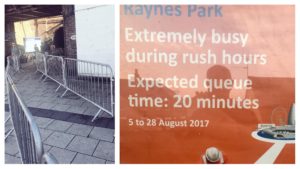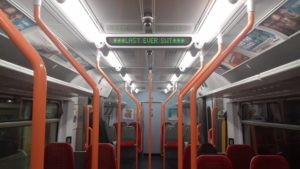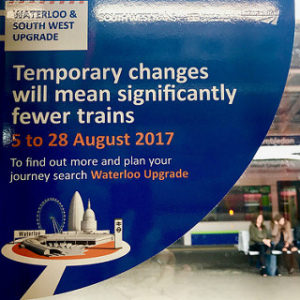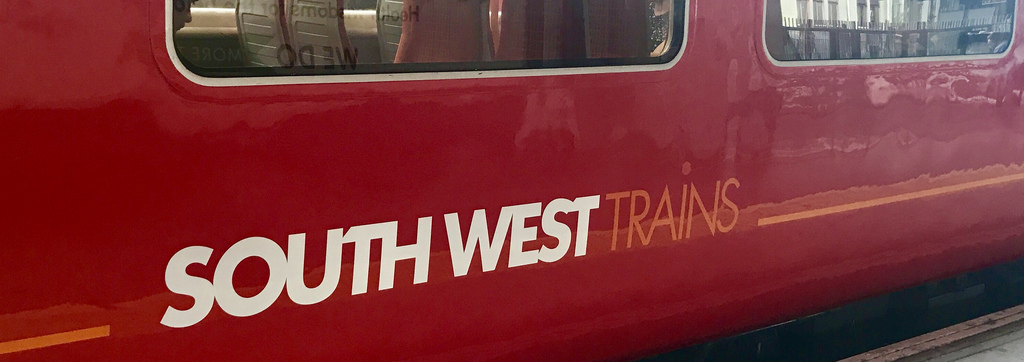There’s almost a week to go until the end of September but today really is #SOLS day. Today’s view from my pulpit is, once again, about transport. Is it too much of a theme.
I’ve written a couple of times in recent weeks about transport in South West London. I’ve never lived in any other part of the city so I can’t comment on issues elsewhere. Although, as I previously noted, I commute into Britain’s business station, so I feel a certain amount of attention is needed in this part of the world.
South London is woefully underserved by London Underground with 250 stations north of the Thames and just 29 south1. So, for those of us South West, the major transport options are main line services into London Waterloo; trams if you’re heading around Croydon or the “misery” Northern Line2 through to the City or West End.
Back in 1974 I don’t think I could point to London on a map (being about 4 years old at the time) but somebody, somewhere, decided that about 50 years later a Chelsea-Hackney underground line might be a good idea and so started a process that leads to this day3.
The Draft Mayor’s Transport Strategy 2017 includes a plan for Crossrail 2: a line that is described as
a new proposed railway linking the national rail networks in Surrey and Hertfordshire via an underground tunnel through London 4
The line is predicted to allow 270,000 more people to travel into the central London the morning rush hour. This is equivalent to about 10% of the current capacity into London. It’s really quite a lot.
The scheme will also “unlock 200,000 new homes”5. That also seems like a big number equating to a lot of new houses. But it also seems like room for a lot of new people because we need houses for the growing London population. If a good proportion of these new houses are near the Crossrail 2 route then it should be assume that some of the people will utilise the route for their commute, after all, why not take the shiny new trains into the office?
So, if each of those houses has at least one occupier and half of those people use the new train for a commute then we have 100,000 additional south west journeys. Much of the new capacity is used-up instantly. And, assuming a single occupier properties seems on the conservative side don’t you think?
I love the fact that years ago people were thinking 50 years ahead and started to make plans. I love the fact the Mayor is promoting the project as a strategic plan. But, is it enough?
Footnotes
1 http://londonist.com/2016/03/alternative-names-for-london-s-tube-lines, Croydon Advertiser
2 Take The Drain, The Misery Line, Then The Viking Line, Londonist
3 Crossrail, History
4 What is Crossrail 2?
5 The Importance of Being Earnest: Making the case for Crossrail 2, London Reconnections
#SOLS
#SOLS is a project to get me writing on this site in 2017. You can read more about it in an entry from the start of the year. Recently, a few of the pieces have been about transport in South West London but can also see what else I have written about in the #SOLS index.

 And then came Monday morning. The alarm went off 45 minutes earlier and, with some trepidation, I made my way to the station. There was some of those crowd control people I previously mentioned, lined-up to help the masses form an orderly queue. But there was a problem with all the planning: there were no crowds. For most of the time, I’ve had a seat on a partially empty train at a time I was warned I’d have to queue. Pulling into Clapham Junction station at around 7am would usually find a platform crowded with commuters trying to find a space: this week more people got off the train at Clapham than got on. It was emptier leaving the station than it was on approach. People have vanished.
And then came Monday morning. The alarm went off 45 minutes earlier and, with some trepidation, I made my way to the station. There was some of those crowd control people I previously mentioned, lined-up to help the masses form an orderly queue. But there was a problem with all the planning: there were no crowds. For most of the time, I’ve had a seat on a partially empty train at a time I was warned I’d have to queue. Pulling into Clapham Junction station at around 7am would usually find a platform crowded with commuters trying to find a space: this week more people got off the train at Clapham than got on. It was emptier leaving the station than it was on approach. People have vanished. And in the middle of it all, with not a great deal of fanfare but a few little touches, Stagecoach bowed out and handled the franchise torch to
And in the middle of it all, with not a great deal of fanfare but a few little touches, Stagecoach bowed out and handled the franchise torch to  In January 2016, it was reported that my local train operator, South West Trains had
In January 2016, it was reported that my local train operator, South West Trains had  South West Trains been the only private operator of the service since I moved to London. Prior to 4 Feb 1996 the service was public, part of British Rail’s Network South East operations. I imagine over the coming months somebody may repaint the train. I’m sure there will be stickers over the old logo and I imagine that there will lots of promotion for new a shiny new web site and some new social media feeds.
South West Trains been the only private operator of the service since I moved to London. Prior to 4 Feb 1996 the service was public, part of British Rail’s Network South East operations. I imagine over the coming months somebody may repaint the train. I’m sure there will be stickers over the old logo and I imagine that there will lots of promotion for new a shiny new web site and some new social media feeds.